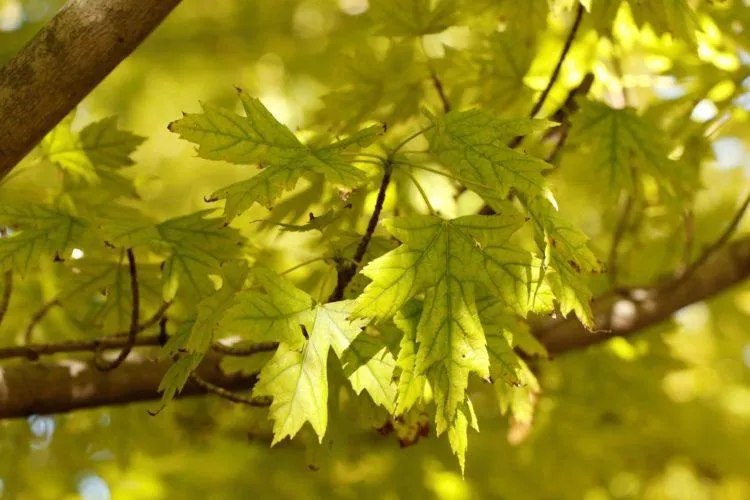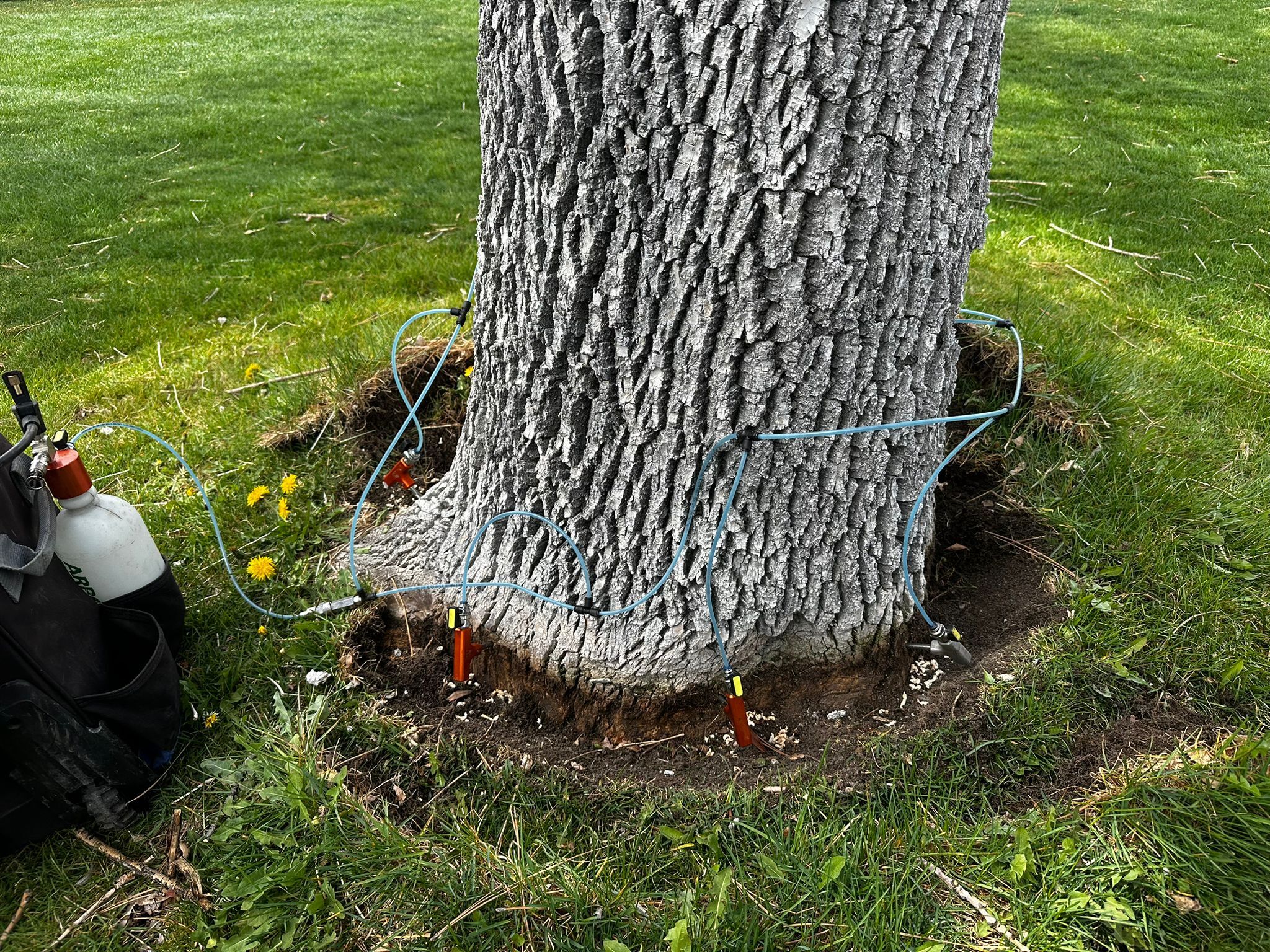
The Color Change That Could Kill Your Tree: What Every Utah Homeowner Should Know
The Color Change That Could Kill Your Tree: What Every Utah Homeowner Should Know
It started like any other summer. The trees in the neighborhood were full and vibrant until one homeowner noticed something strange. Their towering oak, once lush and green, was fading. Not all at once, but slowly. First a few pale leaves. Then more. Before long, the canopy lost its shine, and the green gave way to a yellowish hue.

A Common but Serious Threat: Chlorosis
What this homeowner witnessed was Iron Chlorosis. A condition we see all too often here in Utah.
Chlorosis refers to the loss of green pigment in a tree’s leaves, leading to pale green or even yellow foliage. It’s most common in species like oak and birch, but it can affect a wide range of trees. And if ignored, the consequences can be severe.
Left untreated, chlorosis causes:
Slowed growth
Premature leaf drop
Progressive canopy thinning
And eventually, tree death
So, what causes this decline?
Understanding the Root of the Problem
It’s not just a lack of iron or manganese in the soil it’s the inaccessibility of these nutrients due to Utah’s alkaline, high-pH soils. In these conditions, essential micro-elements like iron and manganese become chemically bound and unavailable to tree roots. Add in poor drainage or compacted soil, and your tree's natural nutrient uptake is blocked even further.
That’s where we step in.
Our Proven Treatment Plan at Utah Tree Care Pros
We’ve helped hundreds of trees recover from chlorosis with a targeted, two-pronged approach that addresses both the symptoms and the underlying soil issues.
1. Trunk Injections for Immediate Relief

We start by injecting the tree with a specially formulated nutrient solution directly into the xylem tissue. This allows the tree to immediately absorb the iron and manganese it needs bypassing the soil altogether.
For oaks and birches, we use trusted tools like the QUIK-jet® or F-Series Tree I.V., paired with Mn-jet Fe™, specifically designed for iron-deficient trees. Results can often be seen within days or weeks, as leaves regain their color and vitality.
2. Soil Drenching for Long-Term Recovery

To support the tree’s future growth, we follow up with a soil application of NutriRoot®, a powerful mix of humic acid, kelp, and essential micro-nutrients. This blend improves soil structure, boosts root health, and helps retain moisture making it a perfect partner to the injection treatment.
It’s not just about treating the tree. It’s about healing the ecosystem around it.
Timing Matters
When it comes to treating chlorosis, season and soil conditions make a difference. Spring and fall are typically best, when trees are actively transpiring and soil temperatures are favorable. But even during the summer, with proper watering and morning applications, effective treatment is still possible.
We always assess each tree's condition before treating. If a tree has lost more than 50% of its canopy, recovery becomes less likely but not impossible with a tailored plan.
What to Expect After Treatment
Every tree is different. Some bounce back in weeks, others take a full season to show visible improvement. But in nearly every case, the change is worth the wait.
You’ll begin to see:
Deeper green foliage
Improved leaf size and texture
Better overall vitality and growth
For trees growing in calcitic or low-organic-matter soils, we often recommend ongoing soil care and amendments to help sustain the results.